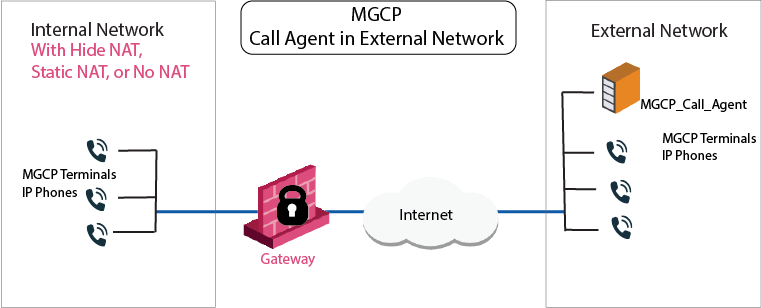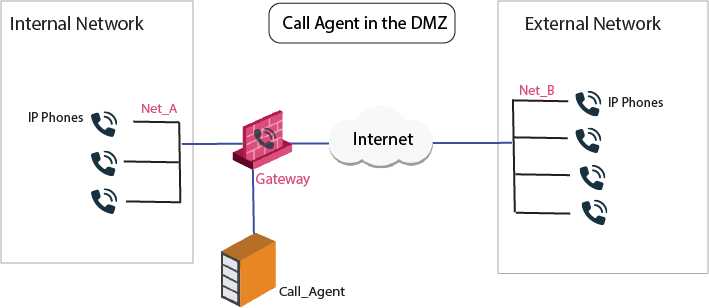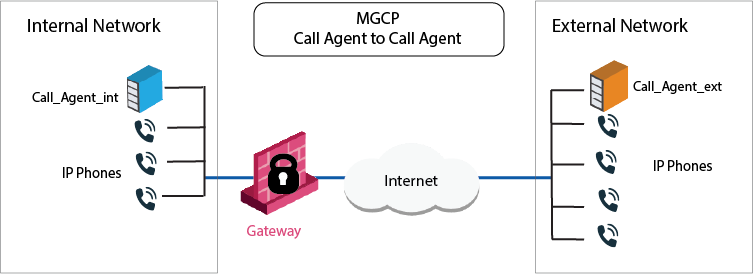


You can configure the Security Rule Base so that the gateway allows MGCP calls.
Best practice - Configure anti-spoofing on the Check Point gateway interfaces.
It is not necessary to configure a rule that specifies which port to open and which endpoint can talk. The gateway automatically gets this information from the signaling. For VoIP signaling rules, the gateway automatically opens ports for the endpoint-to-endpoint RTP/RTCP media stream connections.
The Check Point Security Gateway window shows.
Note - Rematch connections is selected by default.
Note – The old policy rules are still intact for calls already in-progress and they will not be dropped.
An MGCP topology with a Call Agent in the external network is shown in the image. You can configure Hide or Static NAT for the phones in the internal network.
In this image, the IP phones use a Call Agent on the external side of the gateway. This topology enables the a Call Agent that is maintained by another organization. It is possible to configure Hide NAT, Static NAT or no-NAT for the phones on the internal side of the gateway.
This procedure shows how to:

VoIP rule for this scenario:
Source |
Destination |
Services & Applications |
Action |
|---|---|---|---|
MGCP_Call_Agent |
Net_A |
mgcp_CA or mgcp_MG or mgcp_dynamic_ports |
Accept |
For the example in the image, these are Net_A and Net_B.
In this image, the same Call Agent controls both endpoint domains. This topology makes it possible to provide Call Agent services to other organizations.

VoIP rule for this scenario:
Source |
Destination |
Services & Applications |
Action |
Comments |
|---|---|---|---|---|
Net_A Net_B Call_Agent |
Net_A Net_B Call_Agent |
mgcp_CA |
Accept |
Bidirectional calls |
To enable bidirectional calls between phones in internal and external networks (Net_A and Net_B):
In this image, each Call Agent controls a separate endpoint domain. When there are one or more Call Agents, the signaling passes through each Call Agent. Whene the call has been set up, the media passes endpoint to endpoint. Here, a Call Agent-to-Call Agent topology shows Call Agents on opposite sides of the gateway.

VoIP rule for this scenario:
Source |
Destination |
Services & Applications |
Action |
Comments |
|---|---|---|---|---|
Call_Agent_Int Call_Agent_Ext |
Call_Agent_Ext Call_Agent_Int |
mgcp_CA |
Accept |
Bidirectional calls |
To enable bidirectional calls between phones in internal and external networks: